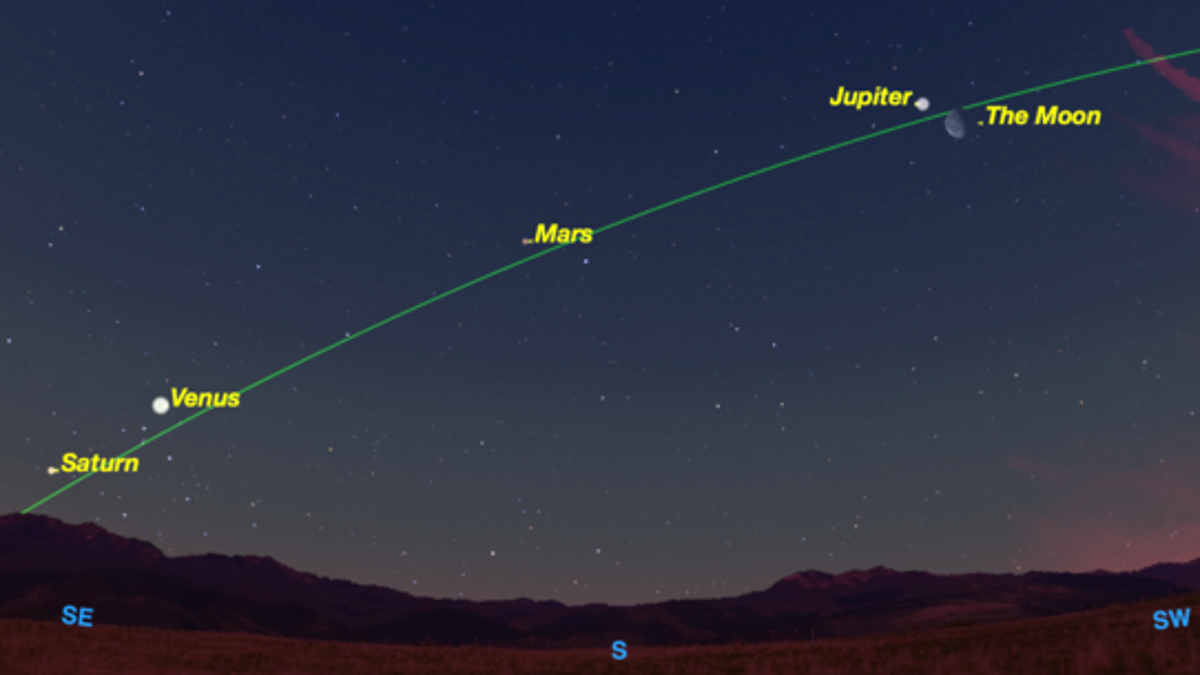
At dawn on Thursday, Dec. 31, the four brightest planets outline the ecliptic, the path followed by the sun and moon. The moon visits each in turn over the next week. (Starry)
Early risers this week will be treated to a spectacular display by the moon and the four brightest planets in the sky, in a fitting celestial welcome to the new year.
Weather permitting, the planets Jupiter, Mars, Venus and Saturn will be visible stretching across the dawn sky right along the ecliptic (the invisible line that the sun follows across the sky).
The ecliptic is something of an illusion, since the sun does not really move along it. Instead, the Earth moves in its orbit around the sun, and observers note that the stars appear to move behind the sun. The moon also closely follows the path of the ecliptic, but ranges above and below it because the moon’s orbit is tilted 5 degrees to the plane of the ecliptic. [101 Best Night Sky Photos of 2015]
On New Year's Eve (Thursday, Dec. 31), the moon is slightly south of the ecliptic while Jupiter is slightly north of the ecliptic, so the moon passes 1.5 degrees below Jupiter. Three days later, on the morning of Sunday, Jan. 3, the moon is slightly above the ecliptic and passes 1.5 degrees north of Mars, which is also north of the ecliptic.
Three days after that, on the morning of Wednesday, Jan. 6, the shrinking crescent moon is approaching Venus and Saturn. A day later, and it has passed them, but still forms a very close grouping with the two planets.
On the morning of Jan. 9, Venus and Saturn will be particularly close, and will fit within the field of a small telescope.
Because the solstice has only just passed, in the Northern Hemisphere dawn still comes quite late in the morning, so many people will be up and about while the sky is still dark enough to observe these interesting conjunctions between the moon and these four planets. This will be a good way to ring in the new year, which will be filled with many interesting events for skywatchers.
Good planet hunting and Happy New Year!
This article was provided by Simulation Curriculum, the leader in space science curriculum solutions and the makers of Starry Night and SkySafari. Follow Starry Night on Twitter @StarryNightEdu. Follow us @Spacedotcom, Facebook and Google+. Original article on Space.com.




















